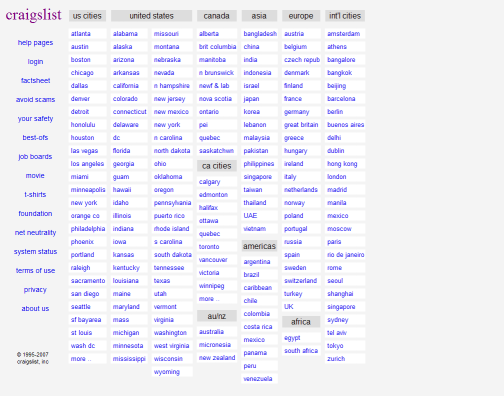AARP Hearing Center
“1, 2, 3, 4, 5, 6 . . . ” Enough already! I got to about 46 and stopped counting. The tile squares that were my bathroom floor all looked the same. I kept forgetting what number I was on. I had a superior view though; I looked down upon the floor from the hard, plastic toilet seat I had been left on. I couldn’t count the tiles, but I could add (really, my clock could, and I could see the clock) the minutes.
In despair, and with a sore gluteus maximus, I gingerly began to get up – where I would go I didn’t know, but I thought it would be embarrassing to officialdom if I made my way into the hallway and called for assistance – just as I heard the knock on the door (“May I come in?” Of course you can – where have you been?), the caregiver entered to clean me and get me off the toilet.
******
This business of needing help peeing, etc. is new to me, as are the many other activities of daily living I can no longer do myself. There’s an acronym for them – ADLs. A dependent person, as I’ve become, needs only to require assistance in two in order to be eligible to reside in an ALF – another acronym in the Long Term Health Care (LTHC) lexicon. If you haven’t been a reader of this blog, it means Assisted Living Facility.
Until I was seventy-two, I had been independent. I made my own choices. I thought for myself. I had been engaged in the dynamics of a physical, intellectual, and creative life.
It took only a moment to change me into a disabled, dependent person – from a TAP (Temporarily Abled Person) to a DAP: a veer to the left while driving my mini-van into the path of a cement mixer truck. After that, it took the accumulated experiences of my past and my being to carry me through the collision: coma, pain, broken and fractured parts, burned skin, successive operations. Then the awakening: the body “humpty-dumpty-ed back together again” - only in a wheelchair with partially functioning hands. But the brain remained intact, the fierce independent spirit alive and unimpaired.
A bad combination: free choice of mind, but not of body.
It means an institution of sorts, various forms of congregate living: Assisted Living Facilities (ALFs) like mine, Continuing Care Retirement Facilities (CCRFs), Nursing Homes (acronym free), Adult Foster Homes (also acronym free). While meeting the basic, physical needs, and perhaps the social needs of the Long Term Care (LTC) recipient, these institutions do just that – they institutionalize. They squeeze independence.
As residents of an ALF, we live a dependent life. Regardless of the extremes of assistance we require, we depend on the concern and care of others, their attention to our needs. They are our villagers.
A resident – whether aged, disabled, ill, or, all of the above – deserves to be treated with dignity and compassion. These words are the lead line in most of the advertising of an ALF: dignity and compassion are promised as the primary goal of most facilities. Is this rhetoric or reality? For me, it’s been a mixed bag. It depends (not a pun). It depends on the front line of those who give care - the hands-on staff: the caregiver.
If we were living in their home, our caregivers would be our children and grandchildren. We would have their love; their remembrance of our caring for them, hand-in-hand as they developed, assisting their lives as they flowered. Now, as ours recede and fade, there may be a feeling of obligation – if not continuation: unbinding family ties.
In our culture, the ALF – and the other acronyms – constitutes the family, the people at-hand, and village, the social order. The caregiver is the person at-hand in assisted living. For me, she – and it’s almost always she - cleans my glasses, opens my mail, dresses and undresses me, showers me, puts me on and takes me off the toilet, wipes me. What does it take to do all that compassionately so that my dignity is maintained? What kind of person does it take? What do compassion and dignity mean to the caregiver and the resident? Does it mean the same thing?
Choosing the caregiver, then, is an important administrative responsibility. Finding the right person means sorting through the motivations of the female, college student, twenty-somethings, who reply to Craigslist to learn about working as a caregiver.

Talking with caregivers over the seven years that I’ve been a resident, I’ve found there are many motivations. They range in breadth from just needing any job, to preparing for a career in the health services profession. Some caregivers need work that fits easily into a school term’s course schedule. Applicants to nursing school need healthcare experience; some students try to show a multidimensional persona on any job application; some need community service for course credit; some sororities require members to volunteer; and, hopefully, for us, the residents, some applicants actually want to help others.
With this many motivations for becoming a caregiver, it’s no wonder that care varies, just like the quality and reputation of the institution. The dignity and compassion can merely be words spoken to prospective residents’ families and written in brochures and on websites.
Caregiving is so important to how we are treated as ALF residents – the dignity and compassion thing – that those of us who have cognition are alert to the subtle signs that ripple across the relationship of those who give care, and those who receive it.
I can tell which caregivers care, who are committed to help; which care less (or don’t give a “rat’s butt,” as one caregiver told me about her colleague); which are hung-over after a night of partying; which call in feigning illness; which are stressed out and hurried because of short staffing; which try not to answer calls in order to study for a test the next day’s or get in a smoke, and worst of all – those who are lazy or don’t like the person in need; and best of all - those who empathize.

An ALF is a community, peopled whose needs swing widely. I am cognitive and aware, but I’m disabled. I can’t perform most simple tasks of a day’s living - in health care jargon, the ADLs or “activities of daily living – it takes the inability to perform two that establishes eligibility for an ALF.
Some in the congregate are disabled like me. Some are unlike me, the result of illness or stroke; some are in the fog of dementia, including Alzheimer’s. These residents can be dangerous to themselves by wandering outdoors and onto streets; they can be dangerous to others, including caregivers, by striking out, behaving hostilely, walking into others’ rooms – common traits of Alzheimer’s victims. Other residents are frail, pushed in wheelchairs, or shadowed by a caregiver as they shakily or painfully push their walkers.
There are those in residency who do things for themselves; who take care of themselves. They’re relatively independent, and might only need their meds ordered, organized, and distributed to them. Some just want to avoid the tasks of housewifery: shopping, coking, making beds, cleaning house, and doing laundry. Some just don’t want to live alone, and seek the company of others. Some have simply given up, and long for a quick and painless death; they no longer want to endure the pain – or boredom.
******
There is an African proverb that says it takes a village to raise a child. In the non-Western portions of the world, on continents other than North America and the countries of Europe, it also can take a village – literally or metaphorically, to assist an elder into the final years of life with care, dignity, and respect. Cultures that honor a life lived.
In Europe, governments will assist in the care of elders. Primarily in the United States, private corporations have engendered the institutions of congregate living, which constitute a Long-Term Care industry. Chances are they will grow and enlarge their profits as the elder population grows, family size decreases, families disperse geographically, and women play a larger role in the workforce.
In modern society, less adult children, grandchildren, brothers and sisters, uncles and aunts, nieces and nephews all live in a single abode or the same community or the same region or even the same country. It once took a village. Today, it’s an ALF.































































